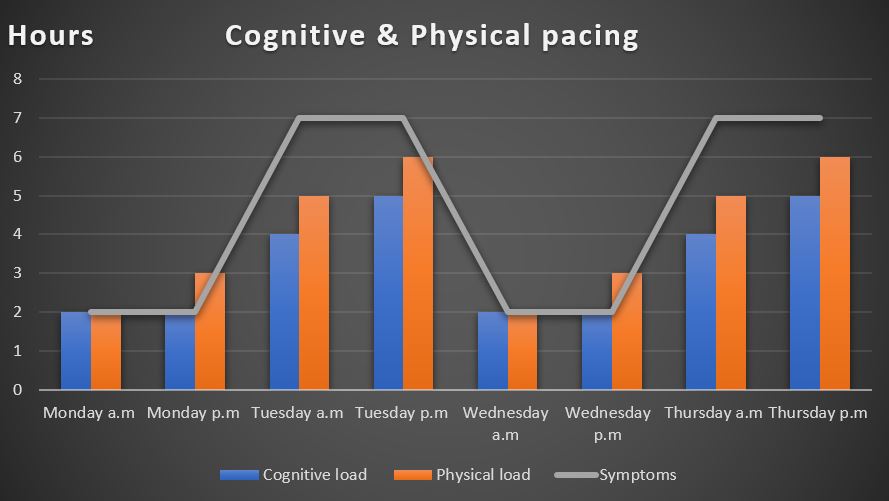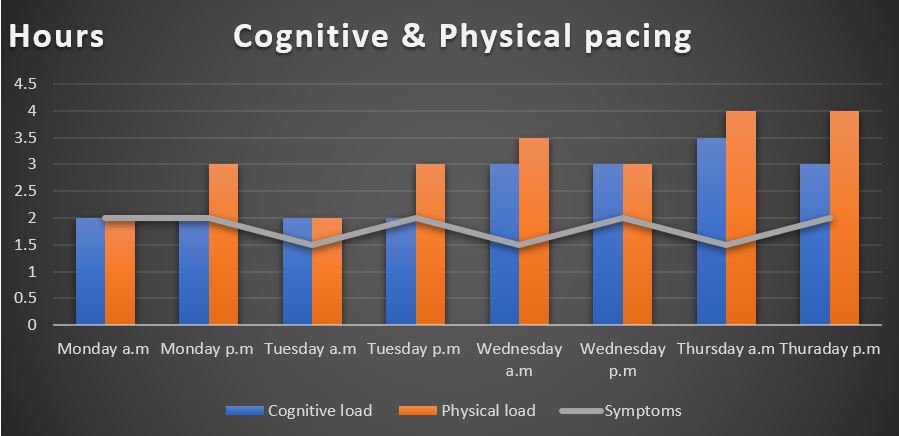Following a concussion injury there are different processes occurring in your brain that require rest to get back to normal. This doesn’t mean that you should sit in a dark room and shut yourself off from the world, it means that you should try to do low level activities that do not provoke your symptoms too much.
Many people who have suffered a concussion tend to return to activities too quickly or participate in symptom provoking activities for too long. To understand this further, ISEH concussion expert Dr Theo Farley shares advice and insight into how best to manage symptoms to aid your recovery after suffering from concussion. He shares practical advice regarding Cognitive and Physical activities and what these are, while addressing the importance of balancing activities.
Advice post-concussion: Pacing Cognitive and Physical activities & the importance of this
Broadly speaking we can consider our activities to be either Cognitive or Physical. If our Cognitive and Physical loads are too high, then symptoms are likely to be higher. The effect of this is that your recovery is likely to be longer. If your symptoms spike from time to time that is okay but if they are consistently too high this is a problem.
A good way of judging how much rest/activity you need is by tracking your activity levels and symptoms. You can do this by creating an activity diary that records the types of activities that you’re undertaking as well as for how long you do them. You can use different methods to achieve this such writing notes, an agenda or the calendar app on your phone. Once you have done this you can then record what your symptoms are like at different times of the day and you’ll then be able to see clearly which activities increase your symptoms and make adjustments accordingly.
Examples of Cognitive activities include but are not limited to the following:
• Interacting with your phone
• Doing work on your computer
• Reading
• Driving
• Cooking
• Meeting friends
• Watching T.V
Examples of Physical activities include but are not limited to the following:
• Exercising
• Housework
• Shopping for groceries
• Going for a walk
• Gardening
• Travelling
What happens when cognitive and physical activities are not managed?
An example of bad Cognitive and Physical pacing can be seen in the graph below. You will notice from this graph that when activity levels go up too high then symptoms are raised. This usually results in concussion sufferers having to rest to settle their symptoms. This results in a yoyo pattern of activity and symptoms that you see below.
The below graphs shows a negative way of conducting your Cognitive and Physical pacing (yoyo activity levels)

The importance of good cognitive and physical activity pacing:
An example of good Cognitive and Physical pacing can be seen in the graph below. From this example you will notice that activity levels start lower and build up progressively, allowing for symptoms to stay consistent. It is inevitable that you will have some symptoms day to day but you should try to keep them under a 2/10 for severity and avoid big spikes.
This graph shows a positive way of conducting your Cognitive and Physical pacing (progressive activity levels.

Further advice to be aware of regarding recovering from concussion
When you are comfortable at a given activity level you can then build up and add to your current levels. If you do this progressively and in line with your symptoms, evidence shows that you will make a faster recovery than if you try to push things. Think of building up in increments of 15-20 minutes for Cognitive and Physical load when a given activity feels comfortable.
Post-concussion - important takeaways to be mindful of:
-
It is important to participate in activities at a level that is comfortable and gradually build tolerance. As tolerance increases, symptoms may not occur as quickly, and many patients begin to recover and have less symptoms as time progresses.
-
Be mindful that symptoms may present after you’ve done an activity and not during so don’t fall in to the trap of doing lots of one activity because you’re ‘feeling good’.
-
Keeping your activity levels low will mean that you have excess time on your hands. Ways in which you can fill your time include- listening to audio books and podcasts, mindfulness exercises and stretching.
Make an appointment:
Dr Theo Farley is a specialist physiotherapist with expertise managing both athletes and active individuals for concussion. Theo has published research within this domain and see patients at our leading sport, exercise and medicine facility on Tottenham Court Road.
To enquire about a consultation with Theo, please contact our team by calling 020 3447 2800 or emailing, info@iseh.co.uk.
Please note: It is important to seek medical help if you or your child have any symptoms after a head injury, visit NHS website for advice and guidance relating to concussion.